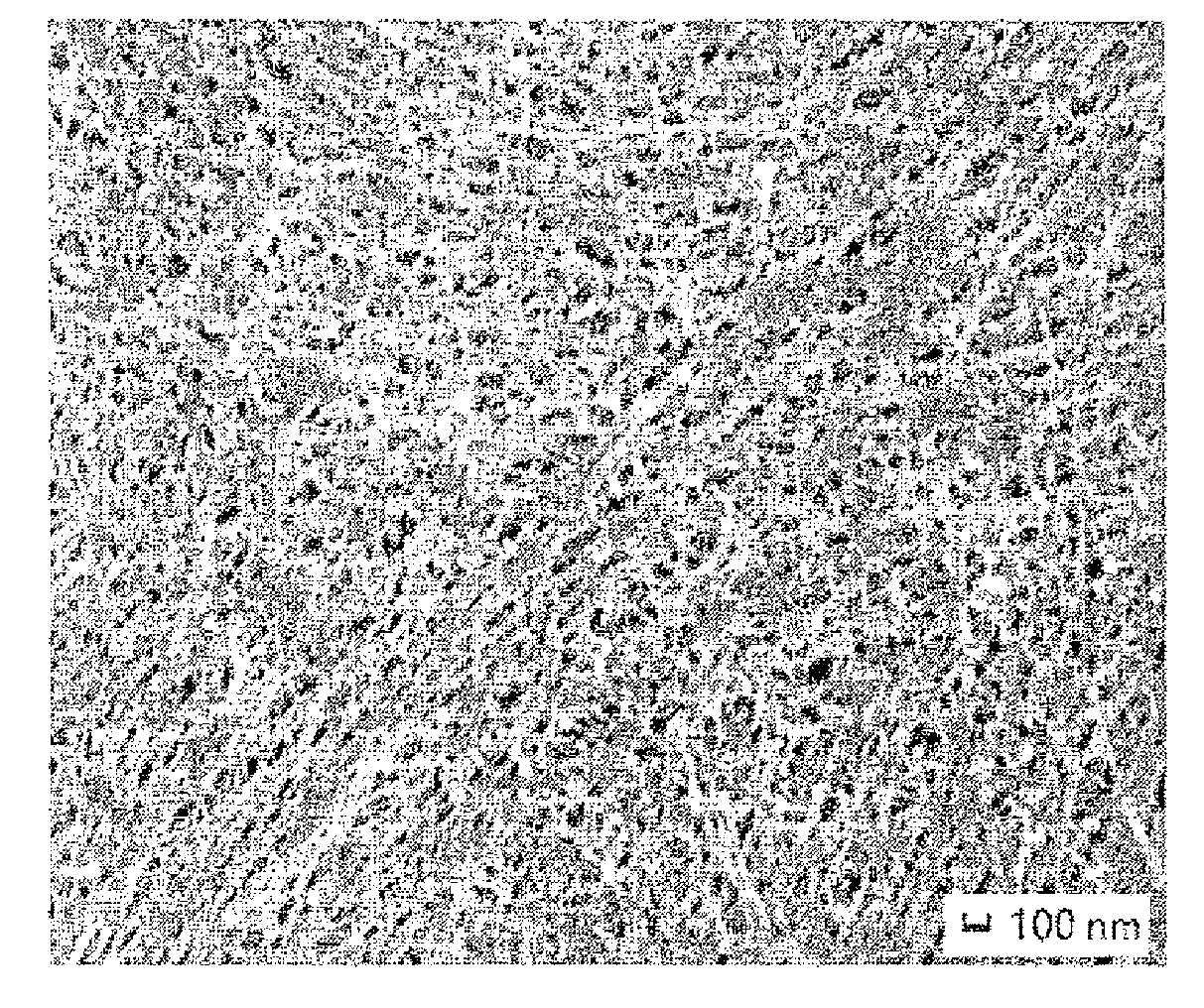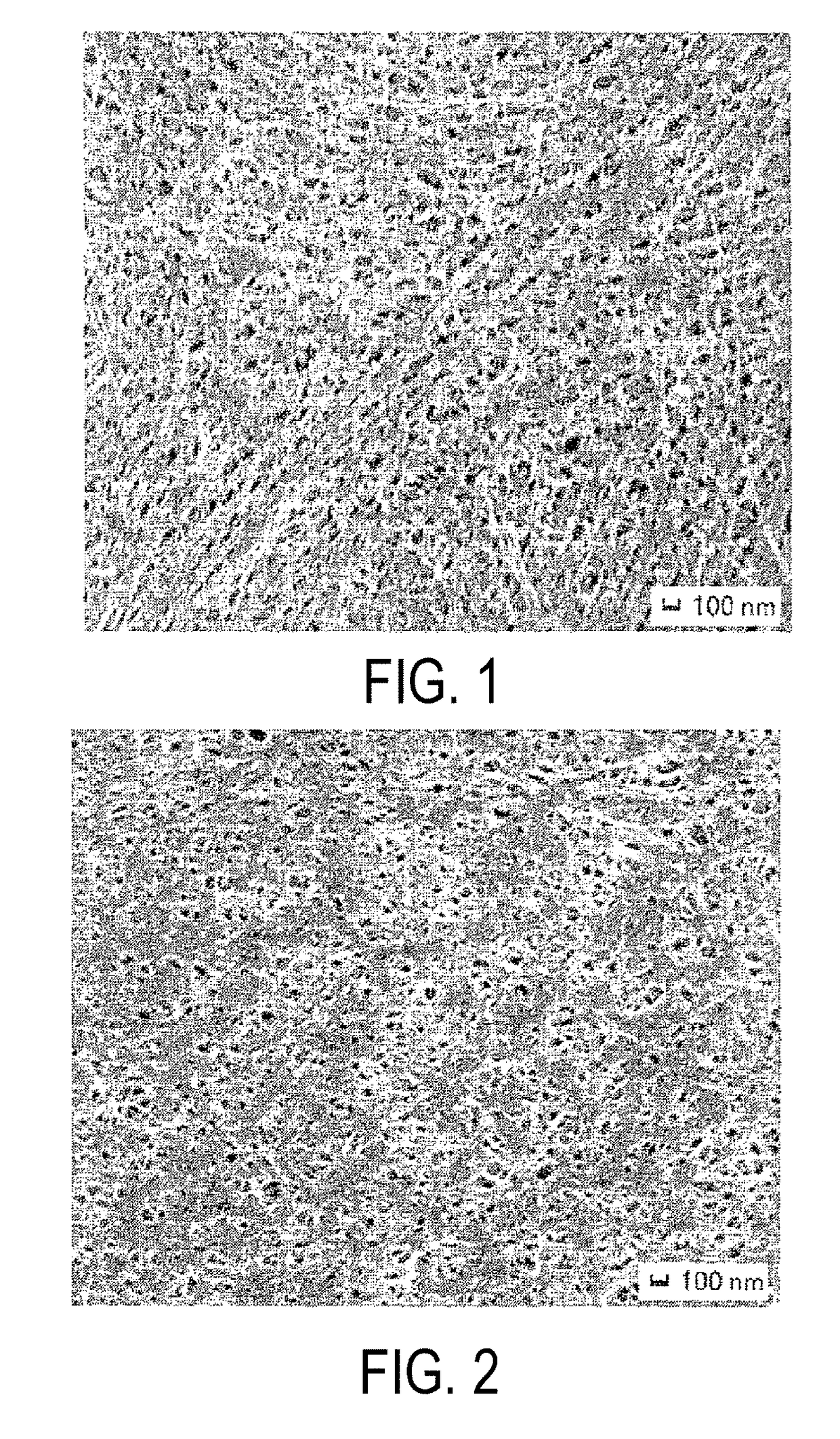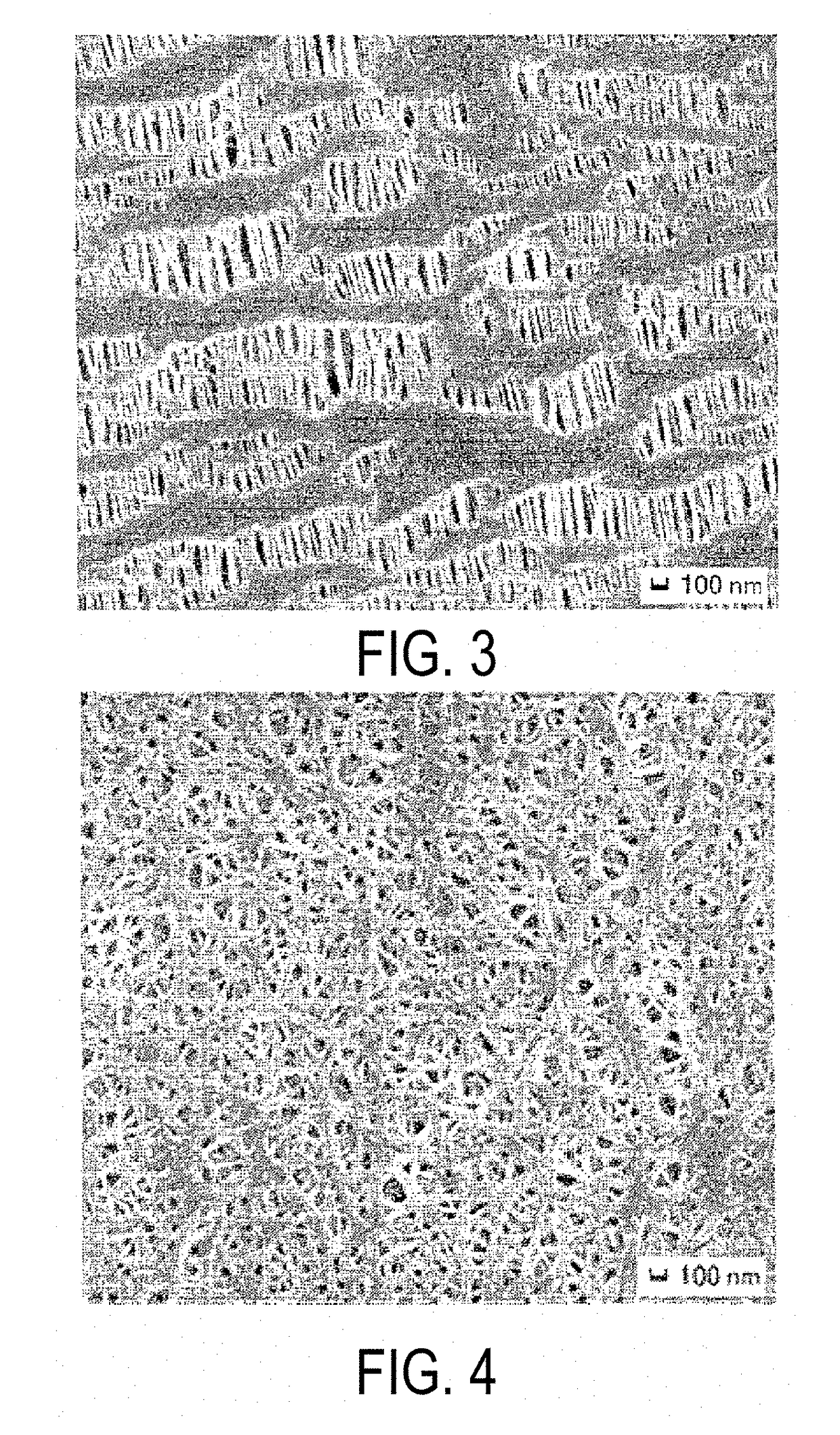Polyolefin microporous membrane, method for producing same, and battery separator
a polyolefin microporous membrane and battery separator technology, applied in the direction of cell components, cell component details, electrochemical generators, etc., can solve the problems of reducing air permeation resistance, pore structure is uneven, and local arrangement of voids may form, etc., to achieve excellent oxidation resistance, excellent withstand voltage characteristics, and excellent impedance characteristics
- Summary
- Abstract
- Description
- Claims
- Application Information
AI Technical Summary
Benefits of technology
Problems solved by technology
Method used
Image
Examples
example 1
[0142]In the twin-screw extruder, 24.75 parts by mass of the ultrahigh molecular weight polypropylene (UHMWPP) having a weight average molecular weight (Mw) of 2.6×106 and a molecular weight distribution (Mw / Mn) of 6.2 and 0.25 parts by mass of a nucleating agent NA-11 (manufactured by Adeka Corporation; aromatic metal phosphate-based nucleating agent) were charged, and 75.00 parts by mass of liquid paraffin was supplied from a side feeder of the twin-screw extruder. The mixture was melt-kneaded in a condition at 180° C. and 200 rpm to prepare a polypropylene resin solution in the twin-screw extruder. Thereafter, the polypropylene resin solution was extruded from a sheet forming die installed at the tip of the twin-screw extruder, and the obtained sheet-like extrudate was taken by a cooling roller at 25° C. to form a gel sheet. The gel sheet was then biaxially-stretched at 120° C. in a manner that the gel sheet was stretched 5×5 times, and then immersed into methylene chloride at 25...
examples 2 , 3
Examples 2, 3, and 4
[0143]Polypropylene microporous membranes were obtained in the same manner as in Example 1 except for changing the temperature during the simultaneous biaxially-stretching to 130° C. in Example 2, 140° C. in Example 3, or 145° C. in Example 4. Characteristics of the obtained microporous membrane were shown in Table 1.
example 5
[0144]A polyolefin microporous membrane was obtained in the same manner as in Example 1 expect for charging 23.50 parts by mass of the ultrahigh molecular weight polypropylene (UHMWPP) having a weight average molecular weight (Mw) of 2.60×106 and a molecular weight distribution (Mw / Mn) of 6.2, 1.25 parts by mass of high-density polyethylene (HDPE) having a weight average molecular weight (Mw) of 5.72×105 and a molecular weight distribution (Mw / Mn) of 4.81, and 0.25 parts by mass of a nucleating agent NA-11 (manufactured by Adeka Corporation) in a twin-screw extruder, and then supplying 75 parts by mass of liquid paraffin from a side feeder of the twin-screw extruder. Characteristics of the obtained microporous membrane were shown in Table 1.
PUM
| Property | Measurement | Unit |
|---|---|---|
| pore size | aaaaa | aaaaa |
| pore size | aaaaa | aaaaa |
| pore size | aaaaa | aaaaa |
Abstract
Description
Claims
Application Information
 Login to View More
Login to View More - R&D
- Intellectual Property
- Life Sciences
- Materials
- Tech Scout
- Unparalleled Data Quality
- Higher Quality Content
- 60% Fewer Hallucinations
Browse by: Latest US Patents, China's latest patents, Technical Efficacy Thesaurus, Application Domain, Technology Topic, Popular Technical Reports.
© 2025 PatSnap. All rights reserved.Legal|Privacy policy|Modern Slavery Act Transparency Statement|Sitemap|About US| Contact US: help@patsnap.com



